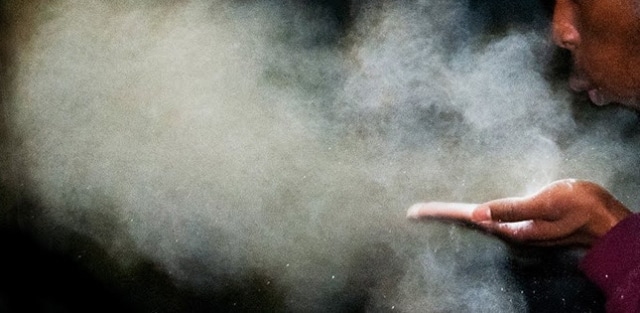Jun 25 2016
Formulators|Aquaflex® introduces Aquaflex® Silica-Free Waterproof Concrete Repair (patent pending), a unique line for patching, skim and self-leveling materials formulated free of respirable crystalline silica (RCS) content. Recently RCS has been identified by OSHA in its Final Rule (effective today - June 23, 2016) as contributing to cancer, silicosis, chronic obstructive pulmonary disease and kidney disease. Silicosis takes the lives of over 600 workers and 900 new cases are reported every year. The construction industry has one-year from the effective date to comply with OSHA's key provisions.
 Respirable Concrete Silica (RCS)
Respirable Concrete Silica (RCS)
"OSHA estimates over 2 million contractors are exposed to RCS. This new ruling will open a Pandora's box of possible worker's compensation liability for flooring contractors engaged in epoxy moisture mitigation. Construction workers who perform concrete grinding or shot-blasting breathe dust that contains RCS. A recent OSHA study(1) found that grinding concrete without dust control exposed workers to levels of dust containing RCS ranging from 35 to 55 times the OSHA permissible exposure limit (PEL). In a second study(2) using a wet-grind process, exposure levels were still 10 times the PEL. In addition, mechanical concrete prep may pose secondary routes of exposures to other trades and the eventual occupants from site contamination. By eliminating RCS from our concrete repair products Formulators|Aquaflex® is taking the industry's first step toward a safe and responsible solution to high moisture flooring installations," said Benny Dickens, CEO/Founder of Formulators|Aquaflex®.
"Coupling our Aquaflex® Silica-Free Waterproof Concrete Repair with Aquaflex2 PSA is the easiest way to satisfy the new OSHA Final Ruling. It's now possible to avoid concrete grind and shot-blast, provide a safe and silica-free concrete repair, followed with an installation using a zero VOC, bio-based, certified GREEN adhesive to an UNLIMITED moisture level," explained Mr. Dickens. "RCS may not be the next asbestos, but if an employer knowingly exposes their workforce to harmful levels of RCS then they may be liable for shortening a man's life. Every which way you look at it, the identified risk is potentially devastating."
Key provisions in the OSHA Final Ruling include:
- Reduces the permissible exposure limit (PEL) for respirable crystalline silica (RCS) to 50 micrograms per cubic meter of air, averaged over an 8-hour shift. A microgram is 1/1000th of a gram.
- Requires employers to: use engineering controls (such as water or ventilation) to limit worker exposure to the PEL; provide respirators when engineering controls cannot adequately limit exposure; limit worker access to high exposure areas; develop a written exposure control plan, offer medical exams to highly exposed workers, and train workers on silica risks and how to limit exposures.
- Provides medical exams to monitor highly exposed workers and gives them information about their lung health.
- Provides flexibility to help employers — especially small businesses — protect workers from silica exposure.
For more information about the OSHA Final Ruling and the detrimental health effects of respirable crystalline silica dust visit the OSHA website at https://www.osha.gov/silica/.
Formulators prefers to work through its nationwide network of commercial contractors, independent sales associates and trained technicians. Aquaflex® is now specified by several leading flooring manufacturers, major national retailers and healthcare networks. Aquaflex® is not just a proven advance in high moisture installation performance but also represents a clear evolution in clean, safe and environmentally responsible product development and manufacturing.
Aquaflex® Silica-Free Concrete Repair performs under extreme conditions…
- NO %RH limitations
- NO pH limitations
- Recommended with Aquaflex² Waterproof PSA Adhesive
- Compatible with standard floor covering adhesives
(1) NIOSH Report No. EPHB 247–15 (2001).
(2) J Occup Environ Hyg. 2007 Oct;4(10):770-9.